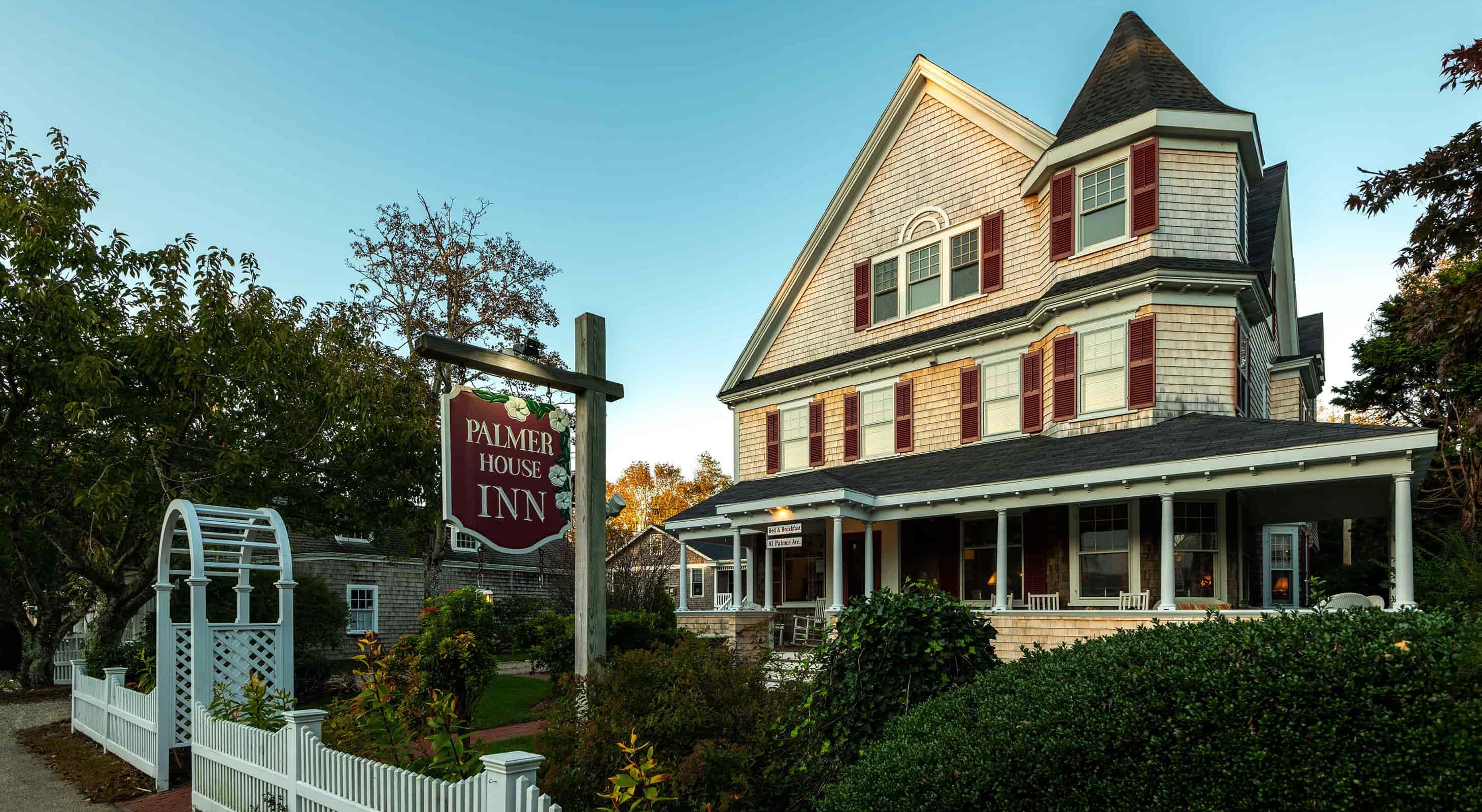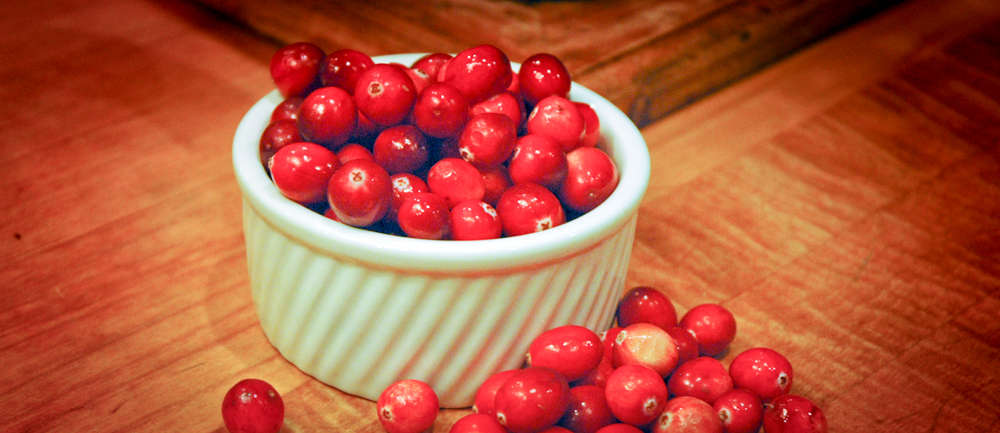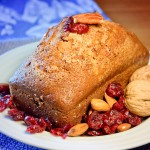The Cape Cod Cranberry Harvest for 2013
The 10th Cranberry Harvest Celebration will be at a cranberry bog just 30 minutes away from the Palmer House on October 12-13.
There are only three fruits that are indigenous to North America and the cranberry is one of them. The other two are Concord grapes and blueberries. When the pilgrims settled in Plymouth in the seventeenth century, the native Americans shared with them the many uses of this bitter little red berry. The Native Americans mixed crushed cranberries with venison and melted fat to forma high protein cake called pemmican. Pemmican was formed, dried in the sun and taken on long journeys.
Cranberries were used in many other recipes by the Native Americans and they were used as a medicine to treat various illnesses including poison arrow wounds. They were also used as a dye for rugs and blankets.
Because cranberries are rich in vitamin C, the pilgrims soon began to include them in their own diets. Captain John Smith first sent a description of cranberries to England in 1614. To satisfy King Charles II’s curiosity about the fruit, the colonists sent a gift to him. It consisted of Indian corn, three thousand cod-fish and ten barrels of cranberries.
Beginnings of the Cape Cod Cranberry Harvest
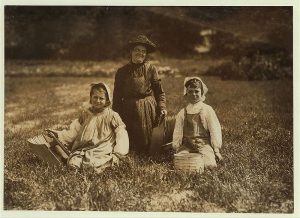
Teixiera family at the Cape Cod cranberry harvest.
Captain Henry Hall discovered a natural method of increasing the production of cranberries in the 1800’s. He was a veteran of the Revolutionary War and lived in Dennis on Cape Cod. The captain noticed that sand sifting over cranberry bogs encouraged the plants to grow more rapidly. He developed a filtration process that is in use to this today. Captain Hall started growing cranberries to feed his sailors while they were at sea. At that time scurvy was one of the dreaded illnesses among sailors while at sea. These vitamin C rich berries helped to stave off the illness. More photos of the Cranberry Harvest.
Indian Names for the Bitter Berries
The Eastern Native Americans called cranberries “sassamanesh”, however, the Cape Cod Pequots and south New Jersey Len-lenape tribes call them “ibimi” which means “bitter berry”. The Algonquin in Wisconsin called them “atogua”. It was the German and Dutch settlers who gave the name that they are known as today. They thought that the blossom looked like the neck, head and bill of a crane, so they called it the cranberry.
A Little Cranberry Trivia
-
Cape Cod Cranberry Nut Bread
There are four hundred forty cranberries in a pound
- 4400 berries in a gallon of juice
- 440,000 berries in a one hundred pound barrel
- Over 400 million pounds of cranberries are consumed by Americans each year
- 80 million of those berries are eaten during Thanksgiving
Most of North America’s producing bogs are in Massachusetts, New Jersey,Wisconsin, Washington state, Oregon British Columbia and Quebec. The majority of the bogs are in Massachusetts.
The Modern Cape Cod Cranberry Harvest
About ten percent of the berries are “dry harvested” and sold in the produce section of the markets. The other ninety percent are “wet harvested” and are used to make juice, sauces and other processed food items. Cranberry vines can grow for years. It is not a crop like corn that needs to be plowed under and planted each year. Some of the vines on Cape Cod are over 150 years old.
Cranberries grow and thrive under specific conditions. The right combination of acid peat soil, fresh water and sand allow the plants to thrive. Originally all cranberries were dry harvested by hand. This was a back-breaking process. In the 1850’s the first hand-held cranberry scoops were used. This simple device greatly improved the harvesting process. Today one person with a gasoline powered picking machine can dry harvest the crop in a fraction of the time that it took one hundred years ago.
Cranberries grow in low fields known as bogs. When it is time to harvest the crop the bog is flooded. All of the ripe berries float to the surface of the water. Long booms are used to guide the berries to the collection point where they are mechanically scooped up, out of the water and processed for transit to the food plants.
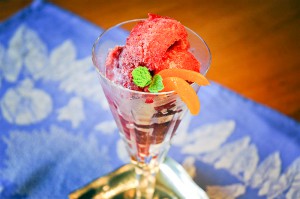
Cape Cod Cranberry Sorbet.
The cranberries arrive in the markets in late September. I stock up and spend several days making and freezing the Palmer House Inn’s well-known Cranberry Sorbet. It is just the right combination of sweet and tart flavor. This is one of the fruit courses that I enjoy making and serving the most. It not only tastes good but looks spectacular with a sprig of spear mint from the inn’s organic herb garden.
Some other Cranberry Links
- 10th Cranberry Harvest Celebration 2013
- Cape Cod Sunrise Recipe
- Old Cranberry Harvest Photos


